If you're looking for lightweight skis that perform well across all-mountain terrain, you're in luck. Modern ski designs are shifting toward lighter materials without sacrificing performance. Whether you're carving groomers, tackling moguls, or exploring off-piste, options like Snowfeet Skiblades, Elan Ripstick 96, Atomic Maverick 105 CTi, and Salomon QST 98 offer something for every skier. Here's the quick takeaway:
- Snowfeet Skiblades (99 cm & 120 cm): Compact and ultra-portable. Great for quick turns, easy to carry, and beginner-friendly. Prices range from $490 to $690.
- Elan Ripstick 96: Lightweight with a playful feel. Ideal for intermediate skiers who want versatility. Priced at $699–$749.
- Atomic Maverick 105 CTi: Designed for mixed conditions and advanced skiers. Costs $749–$799.
- Salomon QST 98: A solid all-mountain option for intermediates and up. Priced between $699–$749.

If portability and ease of use are top priorities, Snowfeet Skiblades stand out. For more traditional skis, the Ripstick 96 and QST 98 are solid choices for versatile performance. Let’s break down the details.
The One Ski Quiver 2025 | The Best All Mountain Skis
Snowfeet* Skiblades: Lightweight All-Mountain Skiing

While most of the ski industry focuses on refining longer skis with cutting-edge materials, Snowfeet* is shaking things up with their Skiblades. These compact skis bring a fresh twist to the slopes, offering a unique take on performance and versatility. Here's a closer look at what sets them apart.
Traditional all-mountain skis typically measure between 150–200+ cm, but Skiblades max out at just 120 cm. This shorter length offers benefits that traditional skis simply can't match.
Take the 99 cm model, for example. It's all about agility, making it ideal for tight turns, weaving through tree runs, or hitting jumps in the terrain park. Then there's the 120 cm FREEDOM Short Skis, which deliver a smooth carving experience akin to traditional skiing, but with the added control and ease of a shorter design.
Another huge perk? Skiblades are super travel-friendly. They fit easily into standard car trunks and luggage, making spontaneous ski trips a breeze. Plus, their lightweight design means less fatigue during long days on the mountain.
When it comes to terrain, these skis are incredibly versatile. Both the 99 cm and 120 cm models handle groomed runs, moguls, and terrain parks like pros. The 99 cm version shines in tight, technical scenarios, while the 120 cm model offers the stability you'd expect from much longer skis, giving you that satisfying carving experience.
Here’s a quick comparison of Skiblades versus traditional skis:
| Feature | Snowfeet* 99 cm | Snowfeet* 120 cm | Traditional Long Skis |
|---|---|---|---|
| Length | 99 cm | 120 cm | 150–200+ cm |
| Maneuverability | High | Medium | Low |
| Fatigue | Low | Low | High |
| Portability | Excellent | Excellent | Poor |
| Terrain Versatility | High | High | Medium |
Another standout feature is their compatibility with standard ski boots. That means you don’t need to invest in specialized gear - you can keep using your current boots or rent a pair at the resort.
Skiblades also have a surprisingly easy learning curve. For beginners, their shorter length feels less intimidating and more forgiving than traditional skis. Advanced skiers, on the other hand, love the creative freedom they bring. The compact design makes edge control intuitive and reduces the impact of mistakes, opening up a whole new world of skiing possibilities.
The buzz around Skiblades is real, especially among American skiers. With over 5,500 verified reviews averaging 4.9 out of 5 stars, people rave about how fun and easy they are to use.
"These skiblades are so much fun and easy to control. Never going back to regular skis." – Andrew B.
As for pricing, the 99 cm model starts at $490.00. While it's an investment, the price is competitive with high-end traditional skis - offering unique benefits that make it worth considering.
Performance-wise, the reduced swing weight makes quick turns in varying conditions much smoother compared to traditional skis. On groomed runs, their edge hold and carving ability offer a refreshing change for skiers used to longer gear. Skiblades aren’t just different - they’re a whole lot of fun.
/

see-the-collection
1. Snowfeet* Skiblades (99 cm)
The 99 cm Snowfeet* Skiblades are a fantastic choice for skiers looking to dive into lightweight all-mountain skiing. At just over 3 feet long, these compact skis pack a punch, offering great performance across different terrains while being incredibly easy to carry around.
Weight and Portability
Thanks to their compact size, these skiblades are perfect for skiers who need something portable. Whether you're hiking to harder-to-reach spots or simply want a travel-friendly option, their design makes them a breeze to transport. Plus, their smaller size allows access to areas where traditional longer skis might struggle.
Performance Across Terrain
Don’t let the size fool you - these skiblades are built for performance. They shine in powder, on groomed slopes, in snow parks, and even on moguls or uneven terrain. With a camber shape for smooth carving, metal edges for extra grip, and a graphite base for durability and speed, they’re ready for just about anything. The deep parabolic side cut and asymmetrical high twin tips make them perfect for both forward and backward riding. Whether you're into spins, jumps, or tricks, these skiblades have you covered.
Learning Curve and Accessibility
For beginners, the 99 cm Snowfeet* Skiblades provide stability and control, making them a great learning tool. Seasoned skiers, on the other hand, will enjoy the chance to get creative and try out new moves.
Price
At $490.00, these skiblades hit a sweet spot in terms of price. They offer the portability and versatility of high-quality skis, making them a solid investment for both beginners and experienced skiers alike.
2. Snowfeet* Skiblades (120 cm)
The 120 cm Snowfeet* Skiblades bring extra length for better stability without losing their travel-friendly size. At just under 4 feet long, they manage to strike a balance between control and portability, giving you the freedom Snowfeet* is known for while adding a touch more steadiness on the slopes.
Weight and Portability
One of the best things about the 120 cm model is how portable it stays, especially compared to traditional skis that are typically 160–180 cm long. Thanks to their compact design, these skiblades are perfect for tight hiking trails where hauling bulky skis just isn’t practical. With a waist width of only 7.8 cm, they’re built for both performance and easy transport.
"Lightweight + Portable Freedom short skis are easy to carry around so you can take them anywhere."
Their small size makes them a breeze to carry, especially when you’re on the go or navigating tricky terrain.
Performance Across Terrain
Portability aside, these skiblades also hold their own across a variety of snow conditions. The added length provides extra stability for all-mountain skiing while keeping the agility that defines Snowfeet*. Whether you’re carving groomed trails or tackling powder, they offer more control and quicker response than traditional long skis.
"They are very responsive, lightweight on your feet, and easy to ride as opposed to cumbersome long skis."
The extra length helps them float better in powder and improves edge grip on harder snow, making them a solid choice for skiers who want versatility in changing conditions.
Learning Curve and Accessibility
Thanks to their nimble design, these skiblades are easy to pick up for beginners while giving seasoned skiers a chance to refine their skills. They’re also great for parents teaching kids, as their responsiveness makes demonstrating techniques a breeze.
"These 120 cm short mini skis are the greatest fun you can possibly have on a mountain as a skier, plus they're super easy to learn!"
Customer reviews back this up, with Snowfeet* Skiblades earning a glowing 5.0 rating. Users like Jakub F. rave about how they’re "light, fun, and practical for the slopes", while Ally from Indy, a snowboarder, loved how easy they were to travel with and use on the lifts.
Price
At $690.00, the 120 cm Snowfeet* Skiblades sit at the premium end of the Snowfeet* lineup. This price reflects the added length and improved performance, while still delivering the portability and versatility that make Snowfeet* a standout choice for all-mountain skiing enthusiasts.
3. Elan Ripstick 96
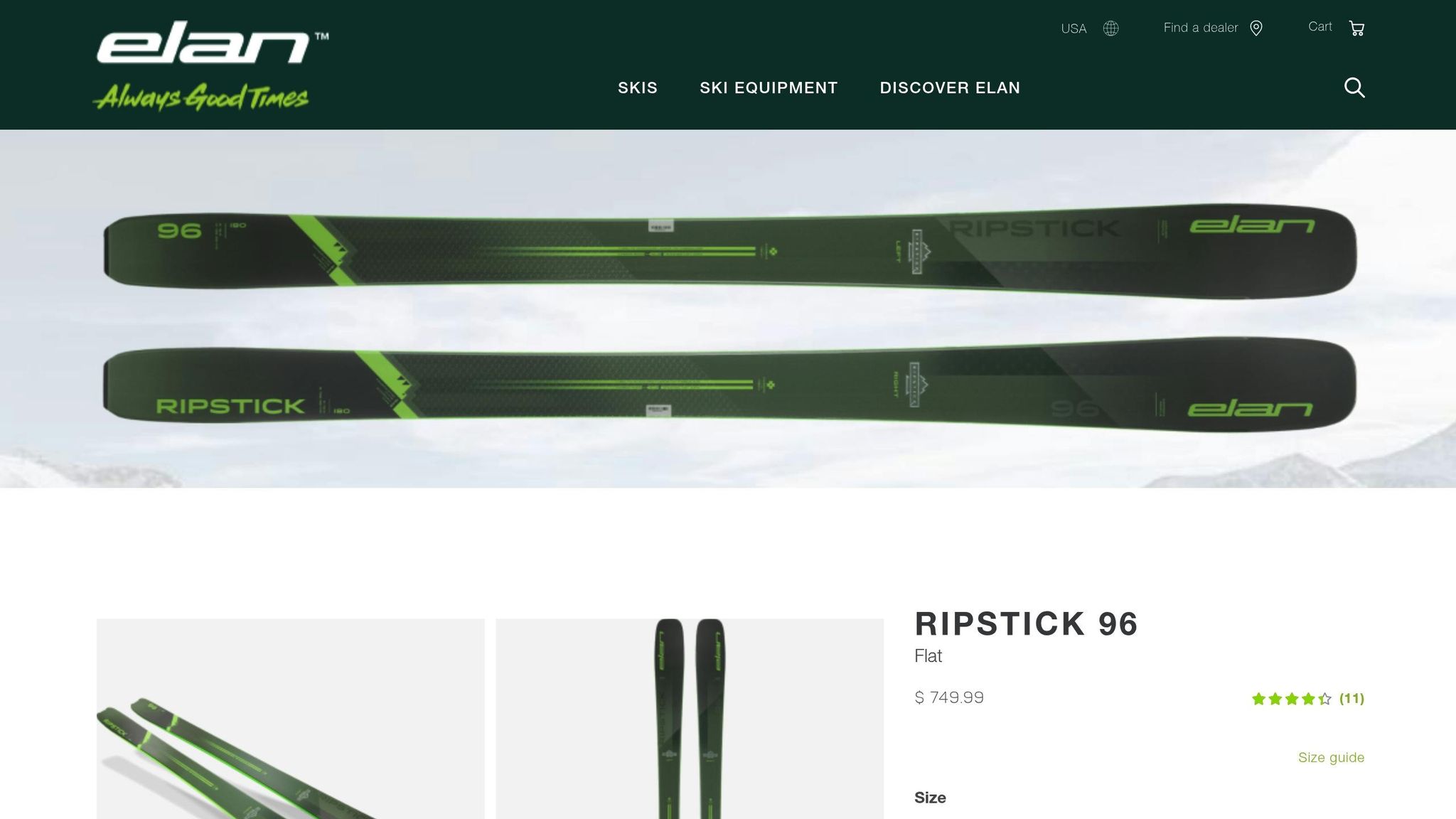
The Elan Ripstick 96 is a lightweight, all-mountain ski built for versatility, though its full-length design makes it less convenient for travel.
Weight and Portability
Weighing in at around 1,740 grams per ski for the 182 cm model, the Ripstick 96 is among the lightest skis in its class. The shorter 164 cm version is even lighter at approximately 1,480 grams. However, unlike compact options like Snowfeet* Skiblades, the Ripstick 96’s traditional, full-length design isn’t exactly travel-friendly. It takes up more space and requires a bit more effort to transport and store.
Performance Across Terrain
The Ripstick 96 features a 96 mm waist and a tubelite wood core reinforced with carbon tubes, making it a solid performer across different types of terrain.
"This ski is very well-rounded. It performs well in most any terrain due to the waist width and maneuverable build. You can get the shovel around very easily and the ski is incredibly simple to turn for how wide it is. Point and shoot--any terrain, any time." - Bob St. Pierre
That said, it’s not without its quirks. At higher speeds, especially in choppy or variable snow, the ski can produce some chatter. As one tester put it:
"Makes a great 'one ski quiver' option especially here on the east coast where deep snow isn't as frequent. Super fun and versatile in all conditions with its only drawback being it's a bit chattery at speed especially in chopped up snow." - Jeff Carpenter
Learning Curve and Accessibility
One of the Ripstick 96’s standout features is its forgiving nature and low swing weight, which make it a popular choice for beginners and intermediate skiers. As noted by one reviewer:
"As such, it's one I find myself recommending to a lot of beginner and intermediate skiers who want to truly ski all over the mountain." - Luke Koppa
However, the 96 mm waist can feel a bit wide for more experienced intermediates, particularly those looking to carve on high-edge angles. Up next, we’ll explore how other options stack up and why Snowfeet* continues to carve out its own niche in the market.
sbb-itb-17ade95
4. Atomic Maverick 105 CTi
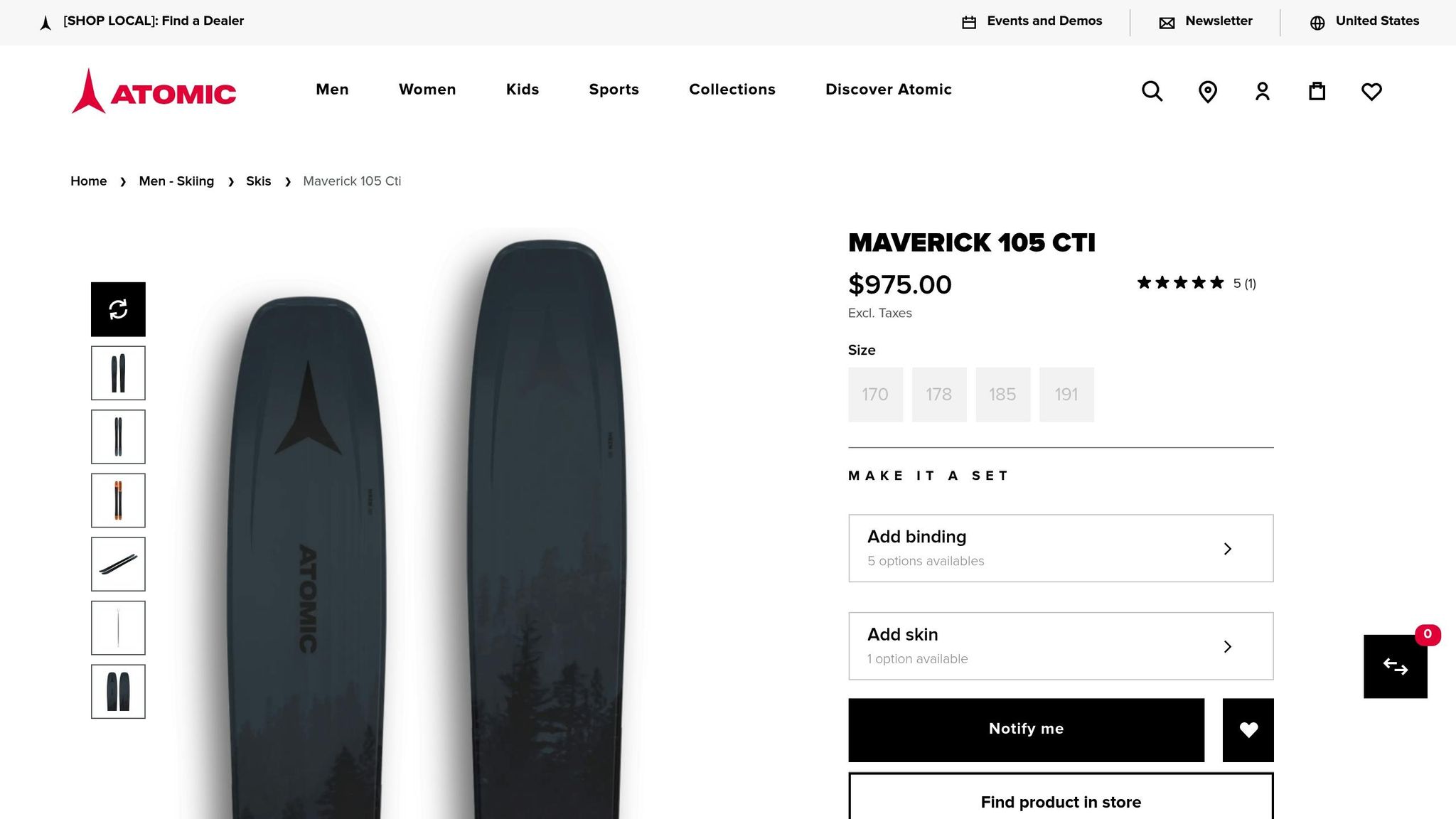
The Atomic Maverick 105 CTi is a classic full-length ski built for all-mountain performance. However, when compared to Snowfeet* Skiblades, its traditional design reveals some challenges - especially in terms of portability and ease of use. This highlights why Snowfeet* remains a go-to option for many skiers.
Weight and Portability
At 2,050 grams for the 185 cm version, the Maverick 105 CTi isn't exactly light. Its nearly 6-foot length, combined with its traditional construction, makes it bulky and less convenient to carry around. While Atomic’s Power Wood Core - crafted from ash and poplar - helps reduce weight, the ski's size still makes transport a hassle. In contrast, the ultra-compact Snowfeet* Skiblades offer unmatched portability, making them a much easier choice for skiers on the go.
Performance Across Terrain
The Maverick 105 CTi shines in its ability to tackle a variety of terrain. With a 105mm waist and a 19-meter turn radius at the 185 cm length, it’s designed to handle everything from groomed runs to powder. Features like carbon reinforcement and HRZN 3S Tip technology enhance its versatility, allowing it to float in soft snow while maintaining responsiveness.
"The ski carved through the powder like a sharp knife. Had a very precise feel to it. The light feel provided quick maneuverability. The heavier snow and bumps were just an afterthought for this ski." - David Wolfgang
While the Maverick performs well in softer conditions, testers noted that it struggles with high-speed stability and edge grip on icy terrain. It’s a solid choice for varied snow, but it demands more energy and skill than the nimble Snowfeet* alternatives.
Learning Curve and Accessibility
When it comes to accessibility, the Maverick 105 CTi is not the easiest ski to master. It's described as "more of an advanced and expert style of ski" and "not terribly easy to use". While determined intermediates might grow into it, the ski's 105mm width and longer length require solid technique and aggressive skiing to unlock its full potential. For those who prefer a simpler, more intuitive experience, Snowfeet* Skiblades offer a much friendlier learning curve, making them an attractive option for skiers seeking effortless fun.
5. Salomon QST 98
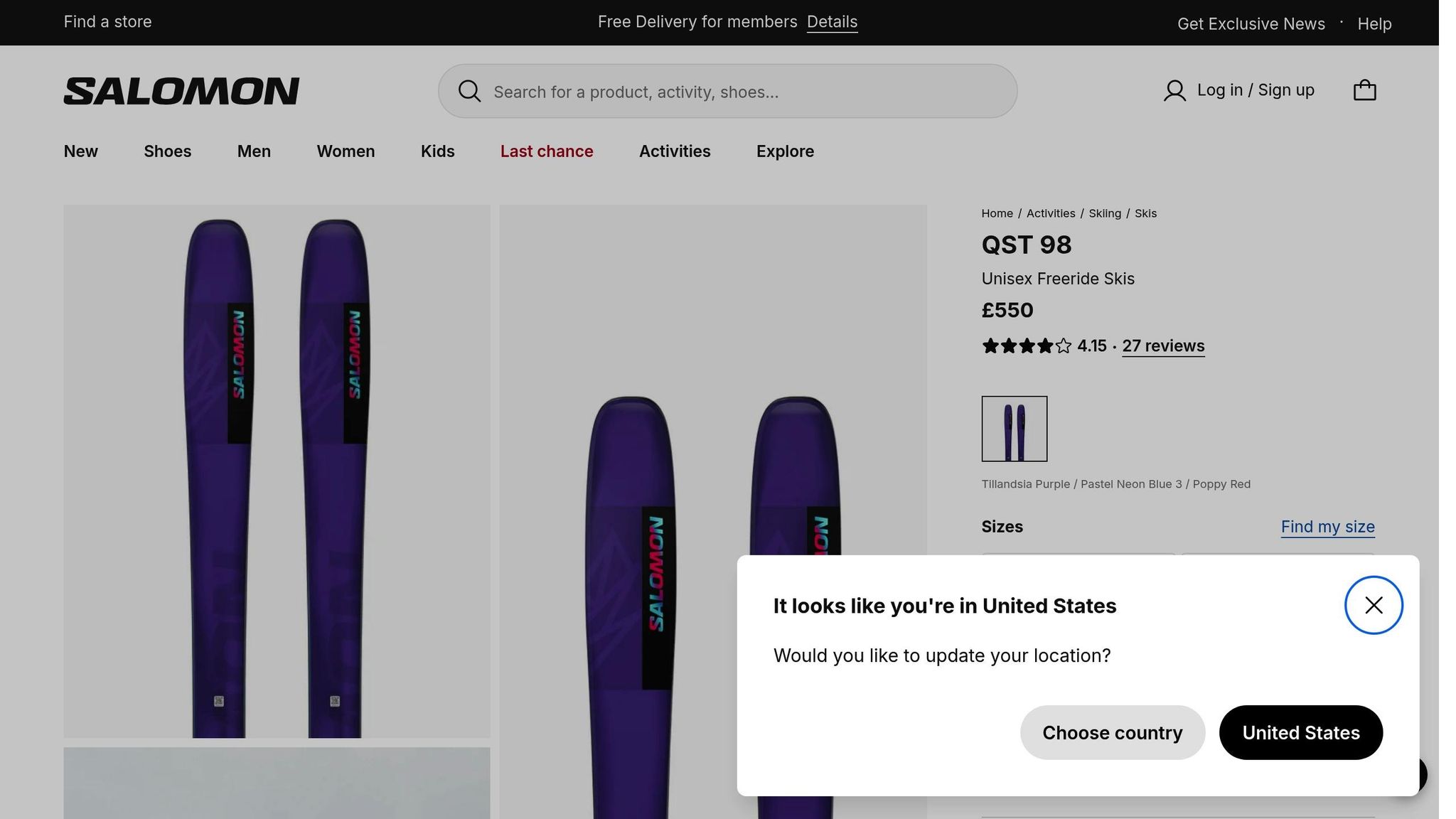
The Salomon QST 98 sticks to a classic all-mountain design, but its bulk makes it a stark contrast to lightweight options like Snowfeet* Skiblades. While it shines in performance, the QST 98 isn’t exactly the easiest to lug around compared to its ultra-portable counterparts.
Weight and Portability
When it comes to weight, the QST 98 highlights the heft of traditional skis. The 183 cm version weighs in at 1,990 g, while the longest 189 cm model pushes that up to 2,100 g. Even the shortest 169 cm version isn’t exactly featherlight at 1,740 g.
| Size (cm) | Individual Ski Weight (g) |
|---|---|
| 169 | 1,740 |
| 176 | 1,860 |
| 183 | 1,990 |
| 189 | 2,100 |
Sure, the QST 98 handles well when you're on the slopes, but its full-length design makes it far less portable than something like Snowfeet* Skiblades. This difference in design affects not just how easy it is to travel with but also how it performs on the mountain.
Performance Across Terrain
The QST 98 is built for versatility across all kinds of terrain. With a 98 mm waist, a 17-meter turn radius at 183 cm, and a rocker profile (26% tip and 22% tail rocker), it floats beautifully in powder. Bob St.Pierre from SkiEssentials.com had this to say:
"It's one of the best floating 98's out there, so deep snow is right in the zone. It's also a great carver due to the shorter turn radius, so the QST 98 is equally happy making carved turns on-piste. Also had some fun in the bumps on this ski, so there's not a whole lot it can't do".
However, it’s not without its downsides. One reviewer noted it "was unstable at higher speeds and could not be carved on hard-packed and icy pistes". Plus, it takes more energy and skill to handle compared to the more user-friendly Snowfeet* Skiblades. That added effort can make a big difference in how quickly someone feels comfortable on these skis.
Learning Curve and Accessibility
The QST 98 isn’t aimed at beginners. It’s best suited for intermediate to advanced skiers. While its 4.37/5 rating from 27 reviews speaks to its performance, getting the most out of this ski demands experience and refined technique. Greg Petrics from SkiEssentials.com shared his thoughts:
"LOVED this ski... It seemed to read my mind and was willing to charge through whatever I pointed it at. I was not expecting to like this ski so much, but it's performance in almost any snow type cannot be denied".
For seasoned skiers, the QST 98 offers a dynamic and thrilling ride. But if you’re looking for something that’s easy to pick up and instantly fun, Snowfeet* Skiblades might be a better fit.
Pros and Cons
Here's a quick rundown of the strengths and weaknesses of each lightweight all-mountain ski model to help you decide which one suits your needs best.
| Model | Pros | Cons |
|---|---|---|
| Snowfeet Skiblades (99 cm) | Fits in a backpack - no need for roof racks or ski bags; easy to learn; great for quick turns and maneuverability; budget-friendly at $490.00; works with regular winter shoes | Less stable at high speeds; struggles in deep powder; limited edge grip on icy slopes |
| Snowfeet Skiblades (120 cm) | Better stability than the 99 cm model; improved float in soft snow; still highly portable; easy to learn; versatile for all-mountain skiing at $690.00 | Slightly heavier than the 99 cm version; steeper learning curve; not ideal for deep powder compared to full-length skis |
| Elan Ripstick 96 | Lightweight design reduces fatigue; playful and nimble, especially in trees and soft snow; good for touring; priced reasonably at $699–$749 | Lacks stability at high speeds; weaker edge hold for aggressive carving; struggles in heavier snow conditions; best for intermediate to advanced skiers |
| Atomic Maverick 105 CTi | Excels in mixed conditions; precise handling; energetic on bumps and in trees; lightweight at 1,610g per ski; fantastic powder performance | Higher price at $749–$799; less portable due to full length; challenging for beginners |
| Salomon QST 98 | Performs well on varied terrain; excellent powder float; great carving with its short turn radius; handles bumps with ease; proven all-mountain design priced at $699–$749 | Requires advanced skills; can be tiring at higher speeds |
Portability is a standout feature for Snowfeet Skiblades. They’re so compact you can toss them in a backpack, making them perfect for travelers or anyone short on storage space. On the other hand, traditional skis require roof racks, ski bags, and more careful transport.
Ease of learning also sets these models apart. Snowfeet Skiblades are beginner-friendly, letting new skiers feel confident on the slopes in just a few hours. Traditional skis like the Elan Ripstick 96, Atomic Maverick 105 CTi, and Salomon QST 98 demand more experience and skill to unlock their potential.
When it comes to cost, Snowfeet Skiblades, priced between $490 and $690, are comparable to premium traditional skis but offer unmatched portability and ease of use. This could free up some cash for extras like lift tickets or lessons.
If you’re sticking to groomed runs, moguls, or mixed terrain, Snowfeet Skiblades shine with their convenience and practicality. However, traditional skis deliver better performance in deep powder, high-speed carving, and more aggressive conditions. For most recreational skiers, Snowfeet Skiblades strike a great balance of portability, simplicity, and affordability. But if you’re an advanced skier chasing peak performance in tough conditions, traditional skis might still be your go-to choice.
Conclusion
Snowfeet* Skiblades bring a fresh twist to skiing, offering U.S. skiers a combination of convenience and performance that’s hard to beat. Their compact size and lightweight design (just 4.4 lbs per pair) make them super easy to transport - whether you’re tossing them in your car trunk or stowing them as carry-on luggage. Compare that to traditional skis, which can weigh 7–10 lbs per pair, and you’ve got a clear winner for portability.
But it’s not just about being easy to carry. These skiblades deliver where it counts: on the slopes. Their shorter length makes them a dream for weaving through crowded resorts, tackling tight tree runs, or adapting to mixed terrain. They’re priced at $490.00 for the 99 cm model and $690.00 for the 120 cm version, putting them in the same price range as premium skis like the Elan Ripstick 96 and Salomon QST 98 - but with the added bonus of unmatched ease and versatility.
The intuitive design is another standout feature. Beginners can quickly gain confidence, while seasoned skiers will love the playful, responsive ride these skiblades offer. It’s a win-win for skiers of all levels.
In short, Snowfeet* Skiblades pack portability, performance, and practicality into one sleek package. They’re shaking up the all-mountain skiing scene, making it more accessible and fun for everyone.
FAQs
How do Snowfeet Skiblades perform compared to traditional skis on different terrains?
Snowfeet Skiblades bring a fresh twist to skiing with their compact size (65–120 cm) and lightweight build. They’re super easy to handle, making them ideal for quick turns, freestyle moves, and cruising through terrain parks. If you’re a beginner or someone who skis just for fun, you’ll probably love how user-friendly and playful they are.
Now, compare that to traditional skis, which are much longer (150–200+ cm) and designed for speed and stability. They’re awesome for advanced skiers on wide, open slopes but can feel a bit unwieldy when you’re trying to navigate tight spots or make fast transitions. Snowfeet Skiblades, on the other hand, are all about portability and flexibility, giving you a fun, hassle-free way to tackle different terrains without lugging around the extra bulk of longer skis.
Why are Snowfeet Skiblades a better choice for beginners compared to traditional long skis?
Snowfeet Skiblades are a great choice for beginners, thanks to their small size and lightweight build. Unlike traditional skis that can feel bulky and tough to control, these skiblades are much easier to handle. Their shorter length makes turning smoother and balancing simpler, so you can pick up the basics faster and enjoy the process without feeling overwhelmed.
Another perk? They’re super portable. Forget wrestling with heavy, oversized gear - Snowfeet Skiblades are easy to carry and store. Plus, they’re versatile enough to handle different types of terrain, letting you explore the mountain without needing a bunch of extra equipment. For anyone just starting out, these skiblades make skiing less intimidating, more fun, and way more convenient.
Are Snowfeet Skiblades a good choice for advanced skiers who want stability at high speeds and performance in deep powder?
Snowfeet Skiblades, like the 99 cm and 120 cm models, pack a punch when it comes to agility and portability. They’re perfect for skiers who want something easy to handle and fun to use across different types of terrain. That said, they’re not built for everything. If you’re chasing high-speed stability or planning to tackle deep powder, these might not be your best bet. Traditional powder skis, with their longer and wider design, are better equipped for floating through deep snow and maintaining control. So, while Snowfeet Skiblades are light and super maneuverable, advanced skiers aiming for those high-speed thrills or deep powder adventures might prefer sticking with classic skis.







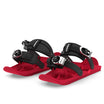
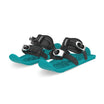












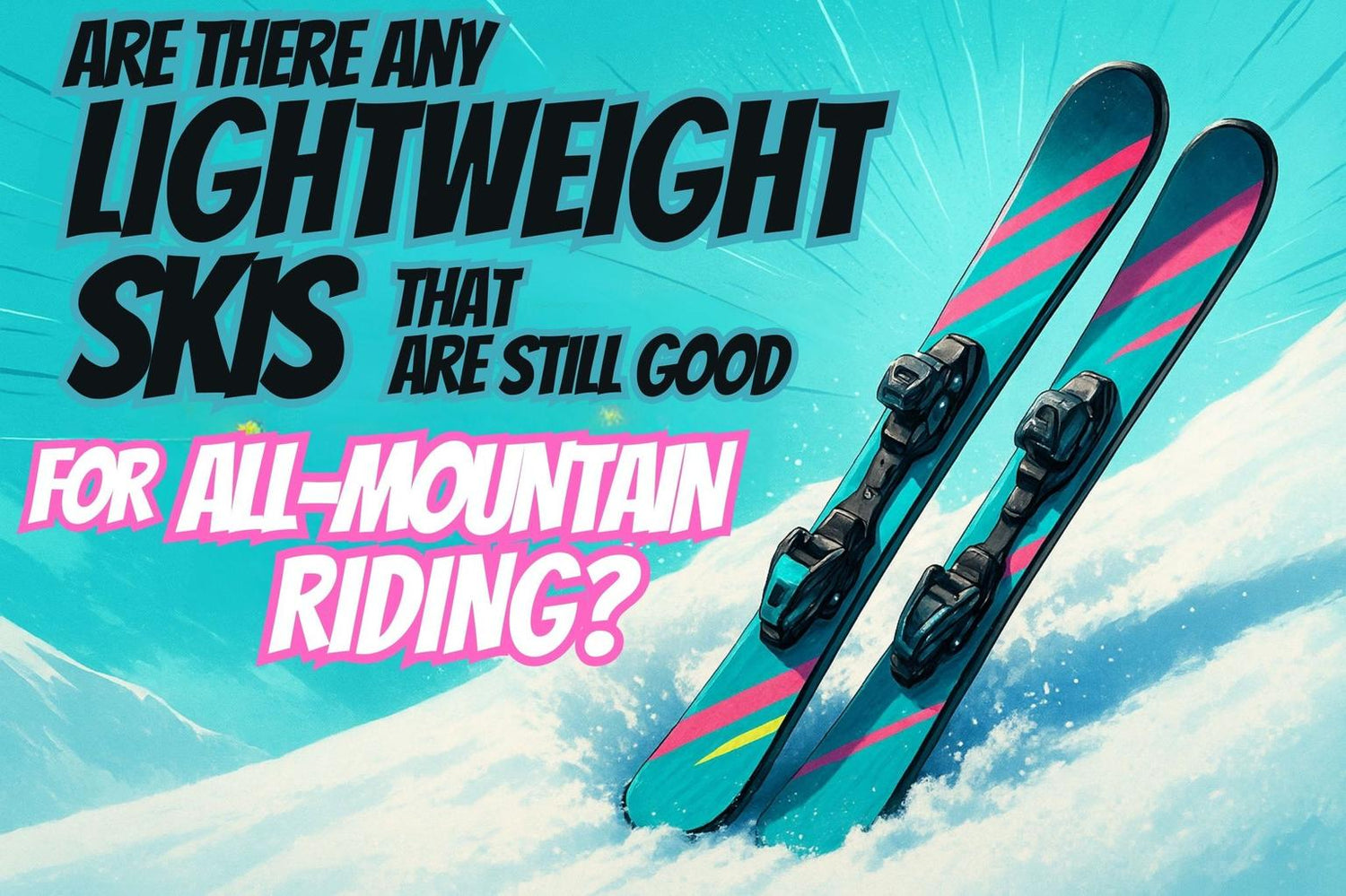
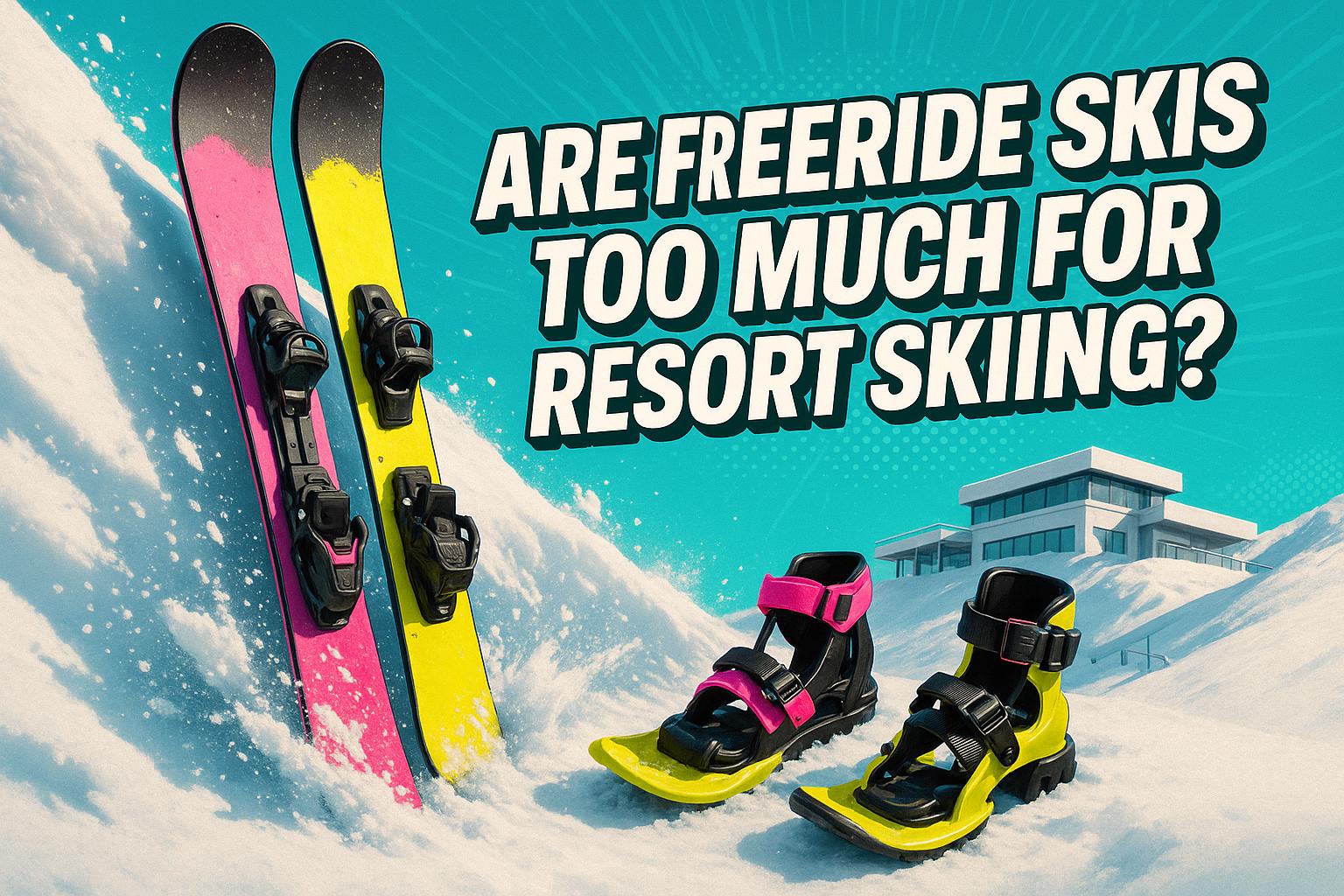
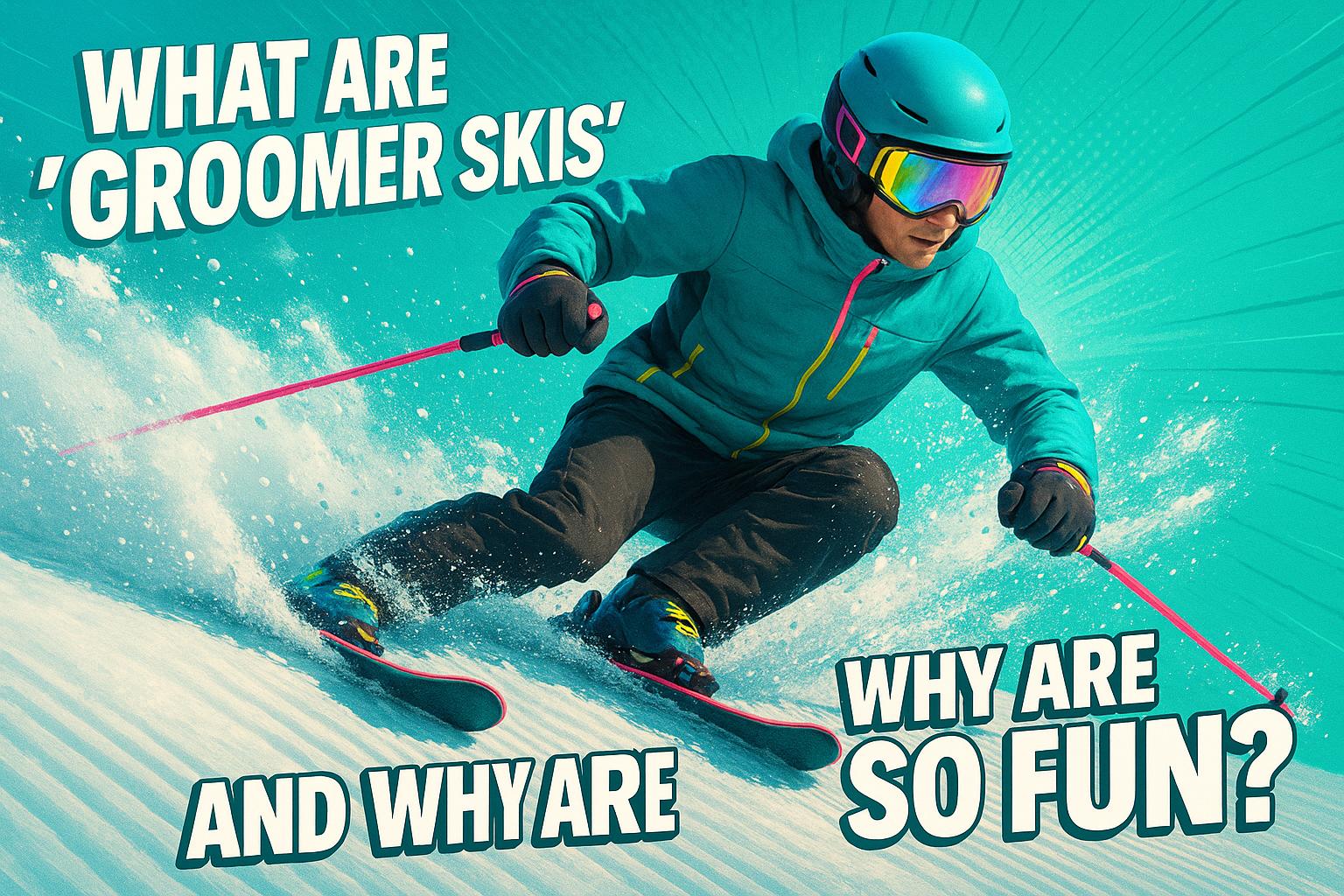




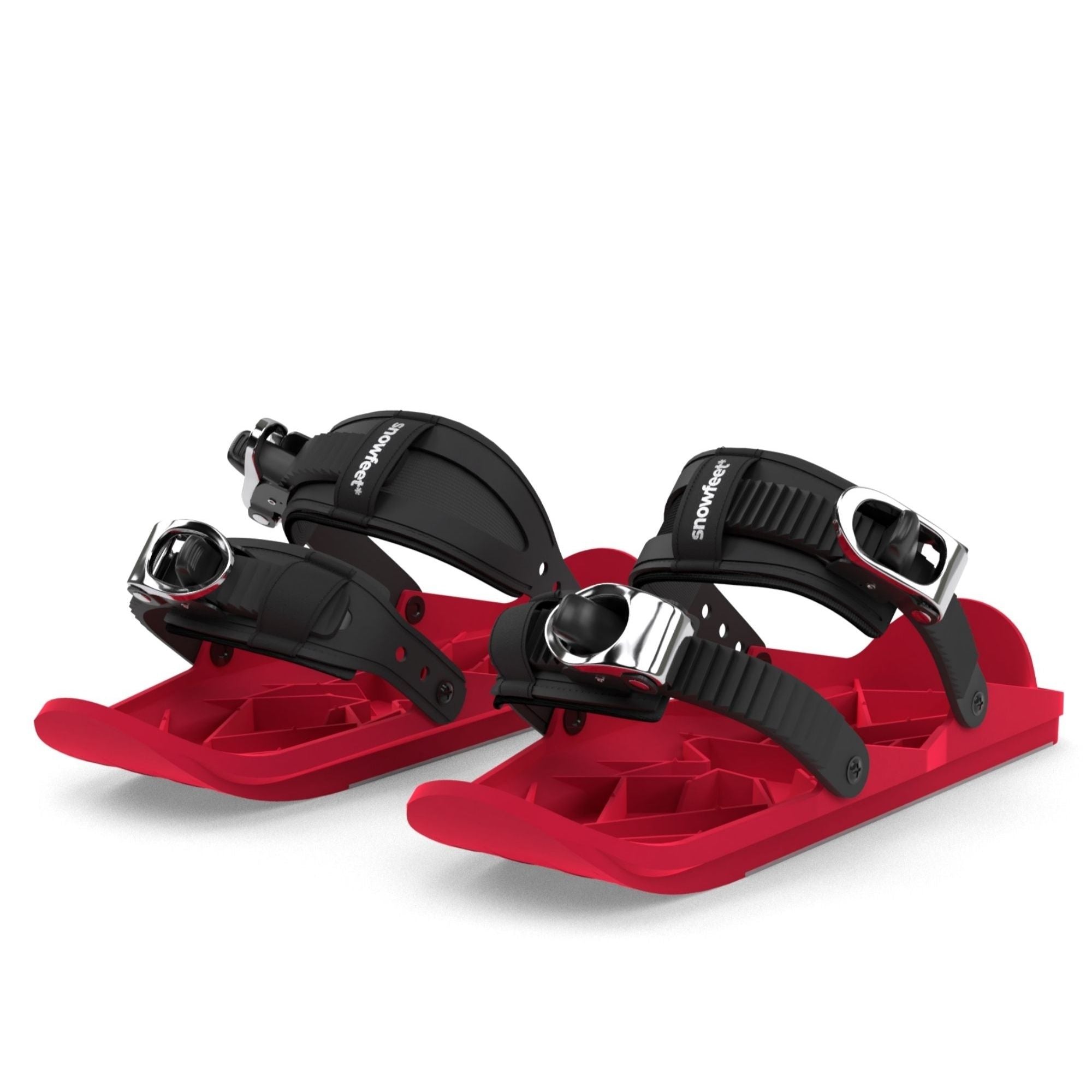
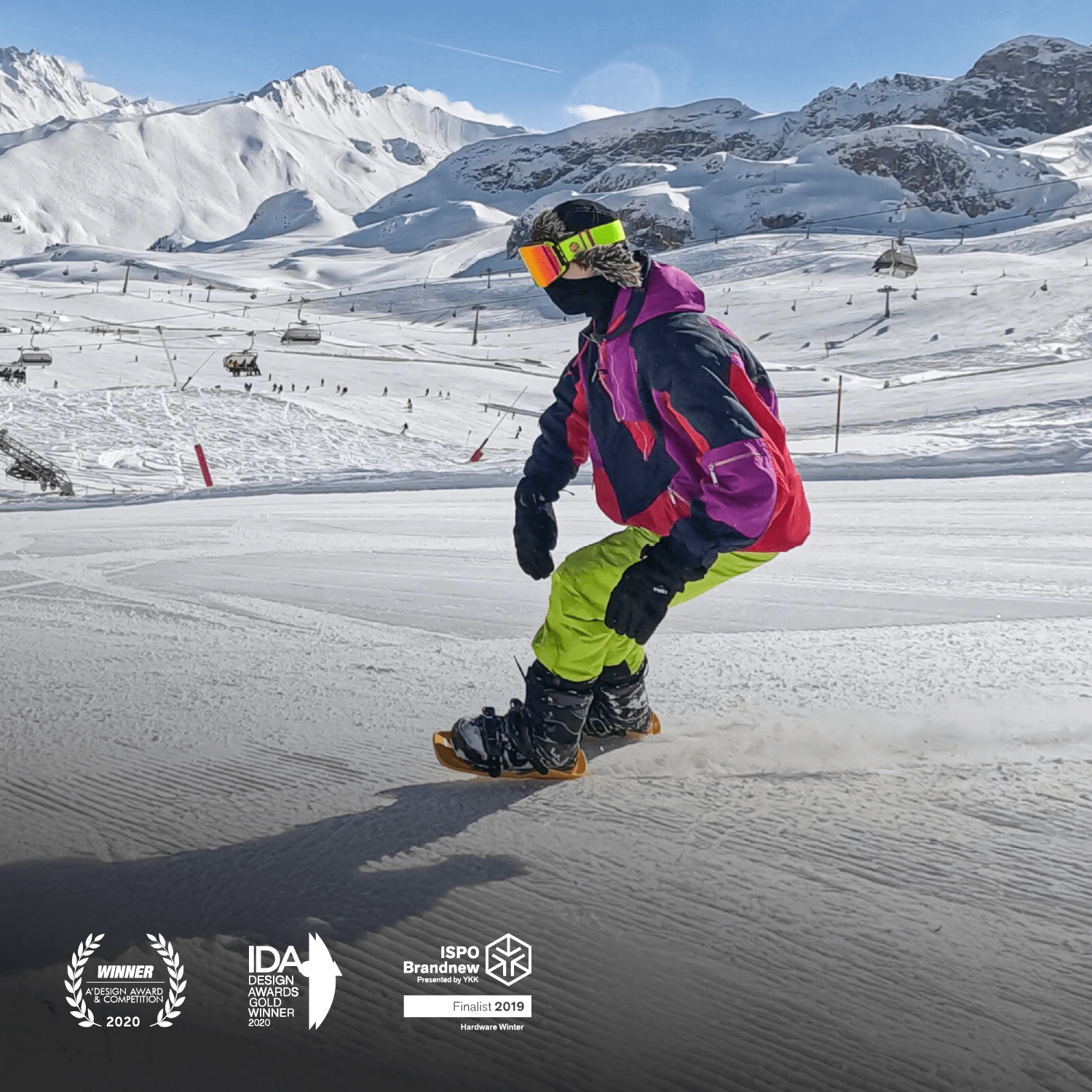




Leave a comment
This site is protected by hCaptcha and the hCaptcha Privacy Policy and Terms of Service apply.